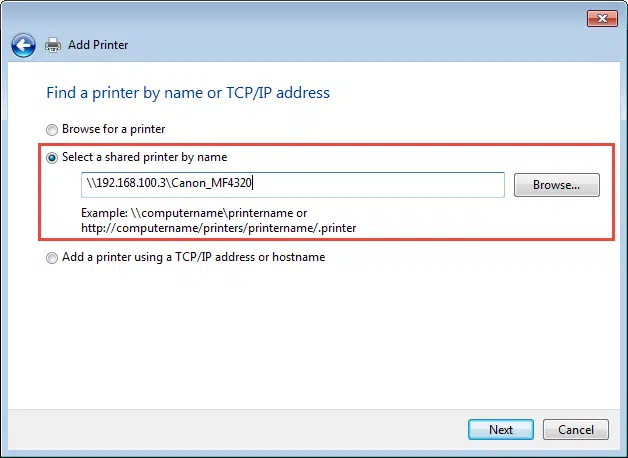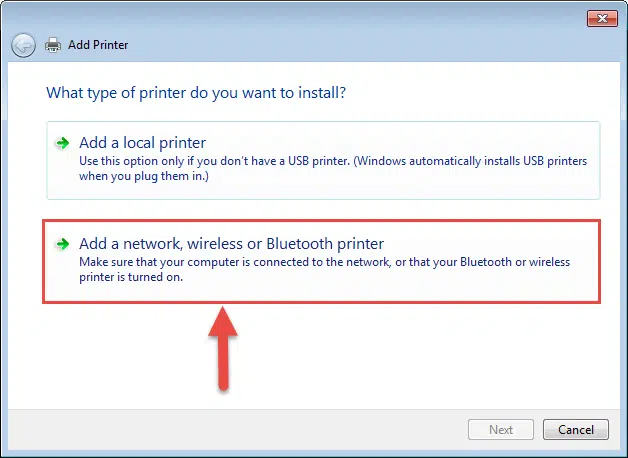Table of Contents
How To Connect To A Shared Printer Over The Network?
How To Connect To A Shared Printer? Most modern computers allow you to share a printer over the network. This requires that the primary computer be turned on and that sharing settings are enabled.
If you’re using a Mac computer or MacBook, you can access a shared printer that’s connected to a Windows PC via a system Apple calls Bonjour.
How to Find a Shared Printer on Your Network?
Many modern printers come equipped with networking (Wi-Fi or Ethernet) and can be shared over the network with a simple series of button presses. If that’s the case, finding a shared printer is as easy as clicking the Add a Device button in Windows or macOS. When you do, Windows will automatically scan your network for discoverable devices and display any that it finds in the “Add a printer or scanner” window. Click the one that you want to install and Windows will handle installation, download drivers if necessary, and set up the printer on your PC. It’s important to note that your network credentials will be required for every time you print using this shared printer, although you can customize your settings so that only those with the right password can access it.
If the printer you’re looking for is connected to a PC that isn’t part of your Homegroup, things get a little more complicated. To start with, you’ll need to join the Homegroup. To do this, launch the Homegroup control panel app on one of the PCs that’s a member and follow the on-screen instructions.
You can also connect a USB printer to a computer on your network and share it manually without using Homegroup. This method is good if you have other computers running different versions of Windows on your network, if you want to use traditional file and printer sharing instead of Homegroups, or if you’re having trouble with Homegroup for some reason.
How to Find a Shared Printer by Name?
When using a network printer, it is important to know the name of the host computer that the printer is attached to. This allows you to connect to the printer without having to know the network address for it, which can be tricky if your printer is shared over a private network and password protected. To find the host computer for your printer, you can use a command prompt. To do this, open the Start menu and click the Windows logo in the bottom-left corner of the screen. Next, click the gear-shaped icon in the lower-left corner of the Start window and then click Settings. Finally, click Devices and then Printers & scanners.
Once you have the host computer for your printer, you can then look up its network address by using a command prompt. To do this, simply open the Start menu and type cmd in the search box. Then, type nslookup followed by the name of the printer and press Enter. The command prompt will then display the IP address of the host computer for your printer.
You can also check the network address for a printer by right-clicking on it and selecting Properties. Then, either select the Web Services tab if the printer only has three tabs or select the Ports tab if it has five.
How to Find a Shared Printer by IP Address?
If your printer is on a network, it communicates with your computer using an Internet protocol (IP) address. This allows you to connect to the printer from different computers on your network without changing your printer driver settings. If you are having trouble with a shared printer, knowing its IP address can help you find it and resolve the problem.
To find a printer’s IP address, open Control Panel and click Devices and Printers. Select the printer whose IP you want to know, then right-click and select Properties. Look in the Web Services tab (if there is one) or the Ports tab (if there is more than one). The printer’s IP address will be listed in one of these tabs.
The process for finding a printer’s IP address on a Mac is slightly different. Instead of opening the Control Panel, press the Apple key and then type “Control Panel.” Click Hardware and Sound, then select Devices and Printers. Click the printer whose IP you want to know, and then click Properties. Look in the Web Services or Ports tab, and note the IP address.
If you don’t have access to the printer whose IP you need. You can log into your router and view a list of connected devices and their IP addresses. The list will appear differently depending on your router’s set-up page. But you should be able to find the information you need by looking for words. Like DHCP Client List, Connected Devices, Network Map, or something similar.
How to Find a Shared Printer by Port?
If you have a network printer that’s shared among multiple computers. You can find it on your network by its hostname or IP address. This method is useful if the printer doesn’t appear in the list of available printers. When you try to add it to your computer. To find a shared printer by hostname or IP address. Select “The printer that I want isn’t listed” and then choose “Add a printer using a TCP/IP device or hostname”.
If the printer you want to use is already set up as a shared printer on the computer. It’s directly connected to, following these steps:
On the computer that the printer is connected to, click Start Settings Printers and double-click Add Printer. On the Add Printer Wizard screen, click A network printer or a printer attached to another computer. And then click Next. On the next page, enter a name for the printer, and then select Finish.
On the other computer where you want to connect to the printer. Open the Control Panel and select Print and Fax. In the Print and Fax dialog box, click Add a printer. On the Add Printer Wizard screen, select A network printer or a printer attached to another computer, then click Next. On the next page, select a name for the printer. (Usually a combination of the manufacturer’s name and the model number), and then select Finish.






Add comment